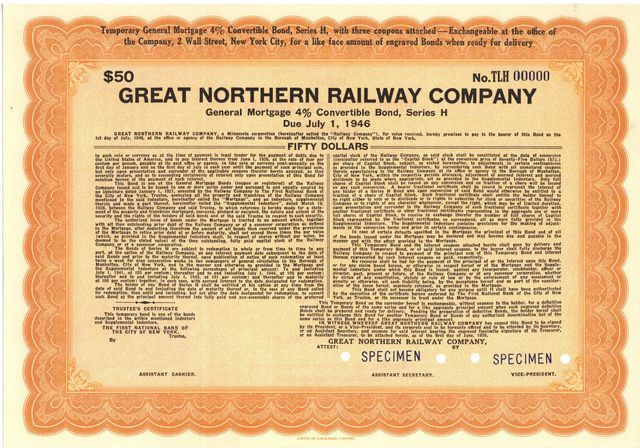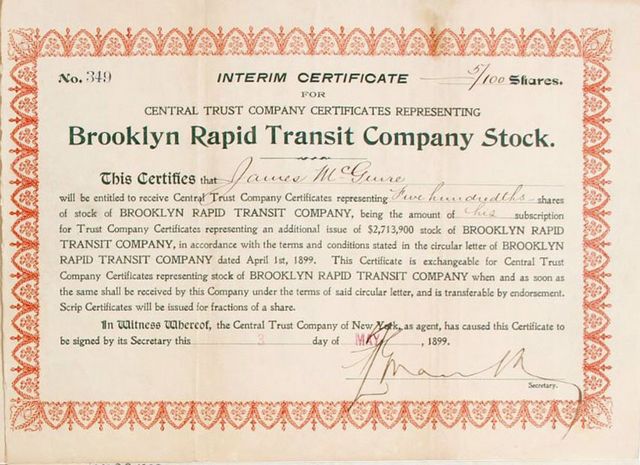Temporary stocks and bonds

Large companies with good funding often used temporary certificates in the period between ordering and receiving new engraved stocks and bonds . Those periods may have lasted as long as several months, depending on the number of proofs needed to secure approval from company management as well as the numbers of certificates printed. Smaller companies normally used generic certificates or simple certificate designs from local printers. In those cases, turnaround times might have been as short as two or three weeks.
Purposes
The whole purpose of temporary certificates was to secure income from certificate sales as quickly as possible. Rarely, if ever, would startup companies have used custom-engraved vignettes on their certificates. If custom-made vignettes are seen on certificates, one can be nearly certain that companies were well-established and profitable.
Temporary securities are fairly common among larger, big-name railroad companies. Those certificates usually signal significant changes were taking place at companies during their dates of issuance. Otherwise, companies would have taken less expensive approaches and continued to use existing supplies of old certificates until new ones were received. Corporate changes might have been as simple as changes in company management or as complex as corporate reorganizations and mergers. Temporary bonds often suggest companies were intending more aggressive growth through increased and more diverse borrowing.
The need for engraved certificates
I have encountered very little discussion about counterfeiting and fraud, but criminals certainly used stock certificates for illegal gain. Fraudulently-issued genuine certificates are rare, but known. Without deep corporate research, spotting fraudulent certificates is probably not even possible. Whether collectors encounter them of not, counterfeited certificates were known in actual trading,
Companies needed the security of engraved and vignetted certificates. More profitable companies had already used engraved certificates for years when the New York Stock Exchange issued a forceful request in 1874 that advised that all listed companies should use engraved certificates to combat counterfeiting. Other exchanges followed within a short period.

Temporary certificates are labeled in a variety of ways, the most common being:
- interim receipts
- temporary stock certificates
- temporary bonds
Purposes varied widely between companies, but most temporary certificates carry a large amount of text explaining their purposes. A substantial number of temporary documents show lithographed text printed on generic frames. It seems temporary documents were often a bit larger than average stock certificates. Temporary stocks and bonds were essentially attractive receipts for stock and bond purchases. Most functioned as full-fledged – and tradable – stocks or bonds prior to delivery of engraved certificates.